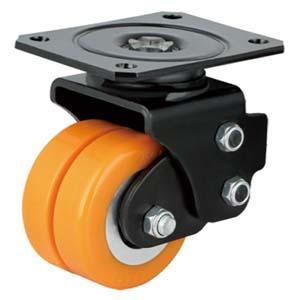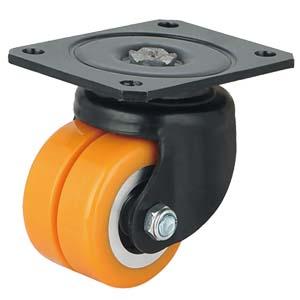How to customize AGV casters
Customizing AGV (Automated Guided Vehicle) casters involves tailoring the design, materials, and specifications to meet specific application requirements. In this guide, we will explore various aspects of customizing AGV casters
Understanding AGV Casters:
AGV casters are essential components that enable AGVs to move efficiently and smoothly. They provide support, stability, and maneuverability. Before customizing AGV casters, it is crucial to understand the unique needs of your application, such as load capacity, floor conditions, speed requirements, and environmental factors.
Load Capacity:
The load capacity of AGV casters depends on the weight of the AGV and the maximum load it will carry. Customizing the caster's load capacity involves selecting the appropriate wheel size, material, and configuration. It is vital to ensure that the casters can withstand the intended load without compromising performance or safety.
Wheel Material:
The choice of wheel material depends on the floor conditions, load capacity, and industry-specific requirements. Common wheel materials include rubber, polyurethane, nylon, and stainless steel. Rubber wheels provide excellent traction and shock absorption, while polyurethane wheels offer durability and chemical resistance. Nylon wheels are suitable for heavy loads and uneven surfaces, while stainless steel wheels are ideal for corrosive environments.
Wheel Diameter and Tread:
The wheel diameter affects the AGV's speed, maneuverability, and load distribution. Larger diameter wheels allow higher speeds and smoother movement but may require more power. Smaller diameter wheels offer better maneuverability and weight distribution. The wheel tread pattern should be chosen based on the floor conditions. Options include smooth, grooved, and patterned treads.
Swivel Mechanism:
AGV casters typically incorporate a swivel mechanism to enable multidirectional movement. The swivel mechanism consists of a swivel head, bearings, and a raceway. Customization options include different bearing types (ball bearings, roller bearings), seals for protection against dust and debris, and adding grease fittings for lubrication.
Braking System:
AGV casters can be equipped with braking systems to enhance safety and stability during stops and when parked. Customizing the braking system involves selecting suitable brake types such as side, top, or central brakes. The choice depends on the AGV's design, load capacity, and operational requirements.
Mounting Options:
AGV casters can be mounted using various methods, including stem, plate, and flange mounts. Customizing the mounting method involves selecting the appropriate mounting type based on the AGV's structure and specific installation requirements.
Noise Reduction:
AGV operations in quiet environments may require noise reduction features. Customized casters can incorporate noise-dampening technologies such as precision bearings, shock-absorbing materials, or specialized tread designs to minimize noise levels during movement.
Temperature and Environmental Considerations:
Certain applications, such as cold storage or high-temperature environments, require casters that can withstand extreme temperatures. Customizing AGV casters for such environments involves selecting suitable materials, lubricants, and seals to ensure reliable performance under challenging conditions.
Maintenance and Durability:
Customized AGV casters should be designed for ease of maintenance and long-term durability. Consider features like grease fittings for easy lubrication, replaceable parts, and corrosion-resistant materials to extend caster lifespan and reduce downtime.
Safety Features:
AGV casters can incorporate additional safety features to prevent accidents and enhance operator and pedestrian safety. Examples include reflective tape, LED lights, proximity sensors, and collision avoidance systems. Customizing safety features should align with specific application requirements and industry standards.
Testing and Validation:
Before deploying AGV casters, thorough testing and validation are essential to ensure their performance and reliability. Customization may include conducting load capacity tests, endurance tests, and environmental tests to verify that the casters meet specified standards and performance expectations.
Supplier Selection:
Choosing a reliable and experienced caster supplier is crucial for successful customization. Consider factors such as their expertise in AGV caster customization, product quality, industry reputation, on-time delivery, and after-sales support.
In conclusion, customizing AGV casters involves a comprehensive understanding of application requirements and various factors such as load capacity, wheel material, swivel mechanisms, mounting options, safety features, and environmental considerations. By considering these factors and working with a reputable supplier, you can customize AGV casters to optimize performance, durability, and safety for your specific AGV application.



 English
English Spanish
Spanish German
German Russian
Russian Arabic
Arabic Portuguese
Portuguese Italian
Italian French
French Hebrew
Hebrew Turkish
Turkish